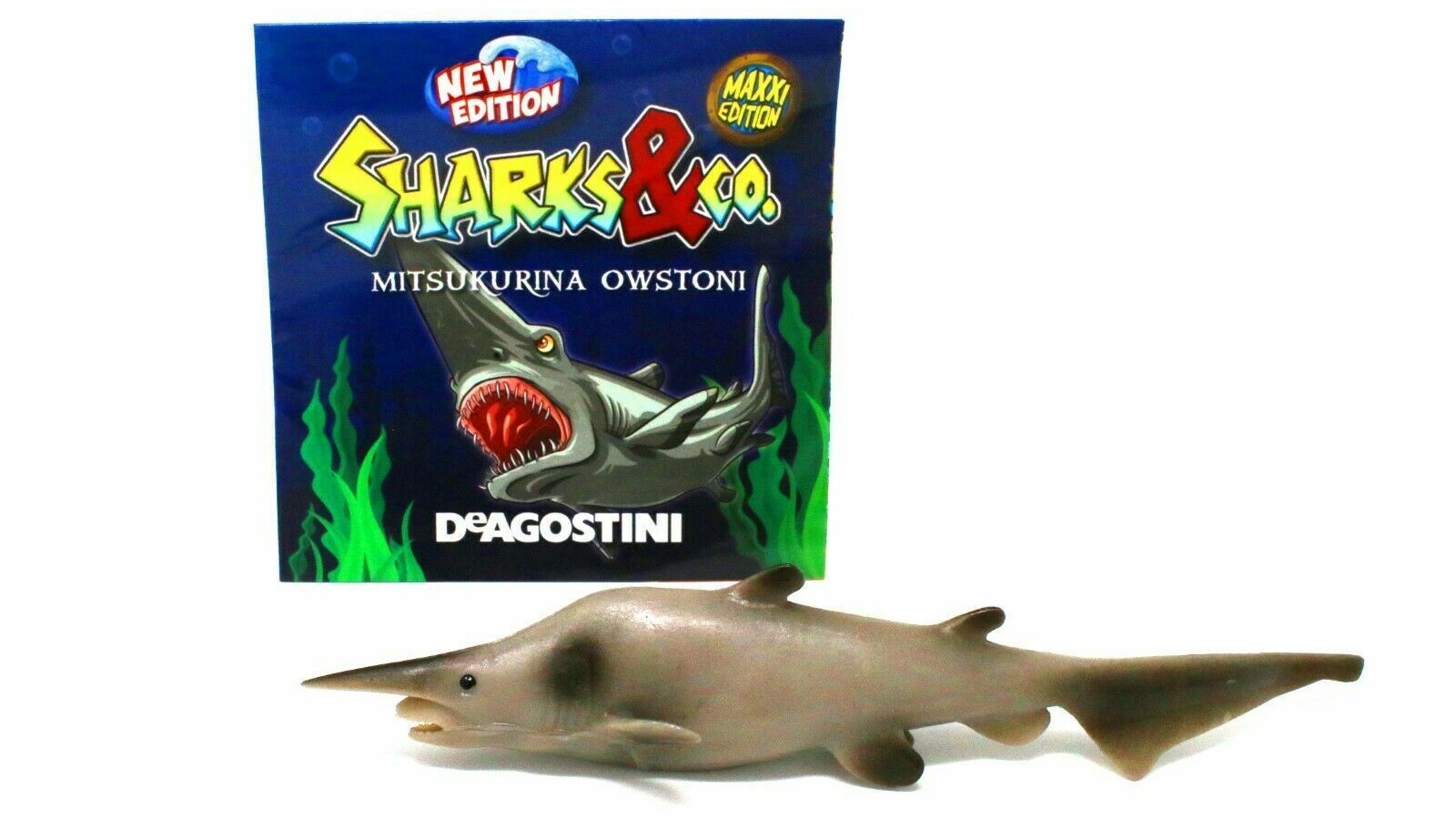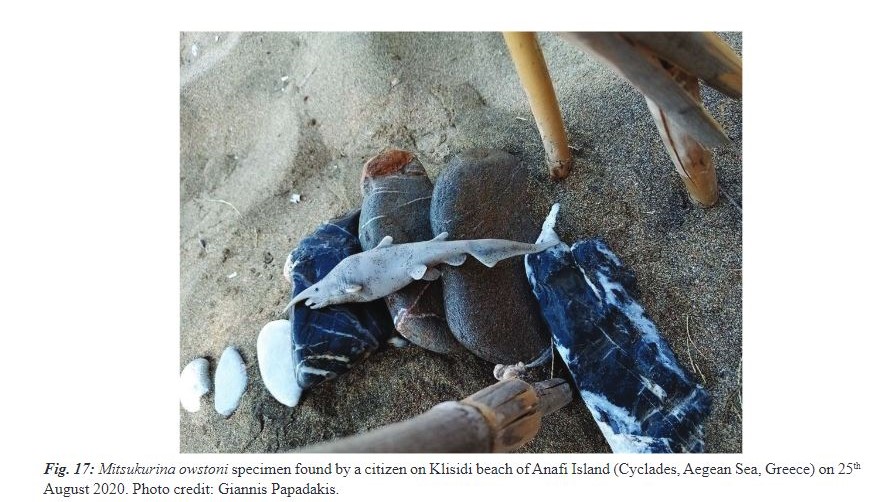
In August 2020, a strange, long-nosed creature washed up on a beach in Greece and caught the attention of a passerby. Giannis Papadakis photographed the specimen and sent it to a team of scientists, who identified it as a remarkably preserved juvenile goblin shark (Mitsukurina owstoni).
This was an extraordinary discovery — nobody had ever spotted this enigmatic deep-sea species in the Mediterranean before.
But soon after a study on the find was published in 2022 in the journal Mediterranean Marine Science, experts expressed doubts about the specimen's authenticity. Critics noted that the shark bore a striking resemblance with a plastic toy available on eBay.
The authors, including Athanasios Anastasiadis, a student at the University of Patras in Greece, retracted the record of M. owstoni on March 22, 2023.
So how could an ostensible plastic toy be identified as a rare shark specimen in a scientific journal?

Failures in peer-review
Experts say the finding points to major weaknesses in the formal peer-review process, by which scientific studies are vetted by scientists in the field. One of the problems is the lax standards of some journals, but they also note that experts are not compensated for reviewing studies. That makes it likely reviewers will be too rushed to spend much time scrutinizing study results for flaws.
In the end, peer review took place largely on the web and via social media.
"I immediately noticed the 'unnatural' look of the shark," Jürgen Pollerspӧck, the founder and editor of Shark References, a database of records of sharks and other cartilaginous fish and a volunteer at the Bavarian State Collection of Zoology in Munich, Germany, told Live Science in a prepared statement. "As this species is a very large shark — adult specimens can grow to over 6 meters [20 feet] — and fishing in the Mediterranean has a long tradition, it would be a surprise if such a large animal had remained undiscovered until today."
Related: Mysterious 'nightmare' shark with unnerving human-like smile dragged up from the deep sea
Goblin sharks live near sea bottoms off the continental shelves in the Indian, Atlantic and Pacific oceans, with many sightings occurring off Japan, according to the MarineBio Conservation Society. The first goblin shark identified in 1898 was the smallest known specimen until now, at 42 inches (107 centimeters) long. So the fact that the current specimen was initially described as just 31.5 inches long (80 cm) was noteworthy and also cause for skepticism.
Pollerspӧck added the picture of the stranded goblin shark to his database in July 2022, but only read the study three months later.
That motivated Pollerspӧck and colleagues to publish a comment paper responding to the initial study on March 13. They concluded that the goblin shark was unlikely to be "a natural specimen."
Not a fish out of water
The original authors doubled down in a rebuttal earlier this month. They said the shark was not 31.5 inches long, as they initially estimated, but a 7-inch (17-20 cm) embryo. This has also now been retracted, but the back and forth over the mystery goblin shark had started filtering out to the wider scientific community.
Shark experts weighed in on Twitter. "No way an embryo of a goblin would look anything like that," Will White, an ichthyologist and senior curator of the Australian National Fish Collection at the Commonwealth Scientific and Industrial Research Organisation in Australia, wrote in a tweet on March 15.
"That's… that's a toy shark," Andrew Thaler, a marine conservation consultant with a PhD from Duke University, tweeted on March 14.
"The main thing is the overall appearance of the specimen," White told Live Science in an email. "A 17 cm long specimen, which this is reported to be, would look very different to a newborn sized specimen. It would be a lot less formed and have very thin translucent skin. This for me was the key thing that just wasn't right."

While other features pointed out by Pollerspӧck and his colleagues, such as the shark's unnatural posture, protruding jaws and lack of damage have been found in real life specimens, the overall consensus is that the "goblin shark" isn't in fact a goblin shark, experts told Live Science.
Beyond a Twitter spat, the debate also renewed conversations about the reliability of the scientific peer-review process.
Almost all scientific research goes through a process called peer-review. Usually, scientists submit a study to a scientific journal, which then asks a group of experts in the field to look over the methods and results. In theory, scientists point out weaknesses in the paper or suggest followup work to make the findings more robust.
Related: Haunting images of 'zombie' shark and other decaying aquarium animals revealed in eerie footage
But in the case of the goblin shark, not one scientist actually saw the creature that caused such a stir.
"The evidence was a photo of a supposed goblin shark on a beach (below) that a scientist took and sent to scientists, the scientists did not examine the specimen. There's no scale bar. Just the one angle," David Shiffman, a marine biologist based at Simon Fraser University in Canada, wrote on Twitter.
Shiffman and Pollerspӧck don't suspect any negative intent or misconduct on the author's part. "In my opinion, the problem and responsibility lies more with the editor of the journal and the reviewers," Pollerspӧck said.
Live Science contacted a co-author of the study and the editors-in-chief of Mediterranean Marine Science for comment, but had not received a reply by the time of publication.
Academic journals do not usually pay researchers to review papers, which some scientists argue leads to long work hours, low motivation and questionable quality.
"We should take this case as an opportunity to reform the system of the peer review process," Pollerspӧck said.
The true nature of the enigmatic finding will never be known as the passerby left it on the beach where he found it.
"Should the species really be found in the Mediterranean, such as specimen will be caught again one day," Pollerspӧck said.







